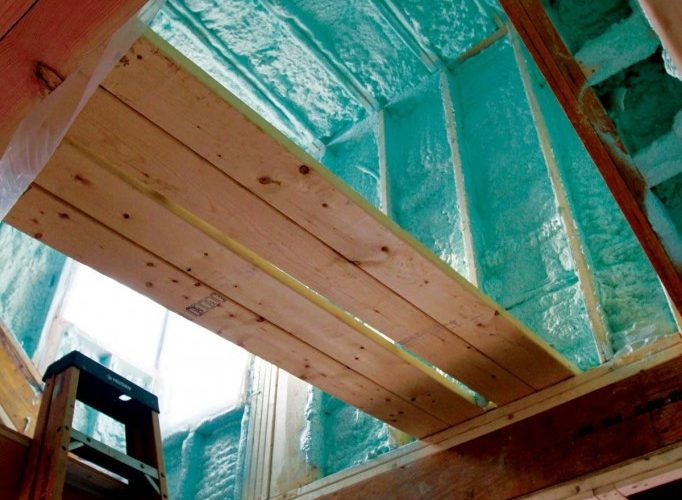The case for choosing soy when it comes to insulating your home. By Kiley Jacques
Sealing cracks, avoiding drafts, and saving money are just a few of the benefits associated with the high-quality, soy-based spray foam used by The Green Cocoon company. Strengthening a home’s structural integrity, blocking unnerving street noise, protecting families’ long-term health, and reducing the carbon footprint are all in a day’s work for the behind-the-scenes soy bean insulant.
Offering an intriguing array of insulation materials—from recycled newspapers to denim pants—The Green Cocoon is popularizing smart, innovative products for insulating homes. Though there are many myths about the safety of such materials, particularly spray foam, office manager Candace Lord dispels the most common concern: threat of fire. If spray foam is correctly installed (something that only trained, licensed contractors should do), it will not cause a fire. The product’s toxicity is another widespread worry. Described as an environmentally safe urethane in which the ozone-robbing CFCs have been replaced with air and water, soy-based spray foam doesn’t give off HFCs, gases, or formaldehyde. Some property owners trouble over animals eating the foam, but there’s no need to worry; although soy-based, it is nonetheless a plastic, and is not pursued as a viable food source.
This revelatory insulating material contains more than 14 percent recycled content. The Green Cocoon team uses Heatlok Soy 200, which is made with rapidly renewable soy oils and recycled plastic bottles. As such, it doesn’t biodegrade and never needs replacing. In truth, soy foam is one of the greenest, safest, and most effective forms of insulation on the market. Though initial installation is costly, the return is tenfold and yields numerous perks, including generous tax benefits and rebates, reduction in moisture buildup and mold, increased resale value, less expensive heating bills, sealed leaks and gaps, and acoustic insulation. Homeowner Dan Silva is pleased with the product, saying, “[The] performance of the spray foam has been outstanding…the space above the garage has stayed at a relatively constant 62 degrees despite a thermostat setting of 59 degrees.”
In an age when do-it-yourself projects are all the rage, insulating your home is one venture that’s best left in the hands of a professional. According to Lord, “You may save money at first, but the risks are so high that, ultimately, it isn’t worth it. ” thegreencocoon.com
Who to Hire? When choosing a spray foam installation company, consider these tips to ensure the best job.
- Be sure it staffs licensed home improvement contractors
- Find out what kind of training its employees have received
- Get proof of its certifications, licenses, affiliations, number of years in business, etc.
- Determine what kind of product it uses; if an off-brand or inexpensive foam is used, there is cause for concern
- Ask for references from previous clients, including homeowners, contractors, and architects
- Stay informed—ask lots of questions

